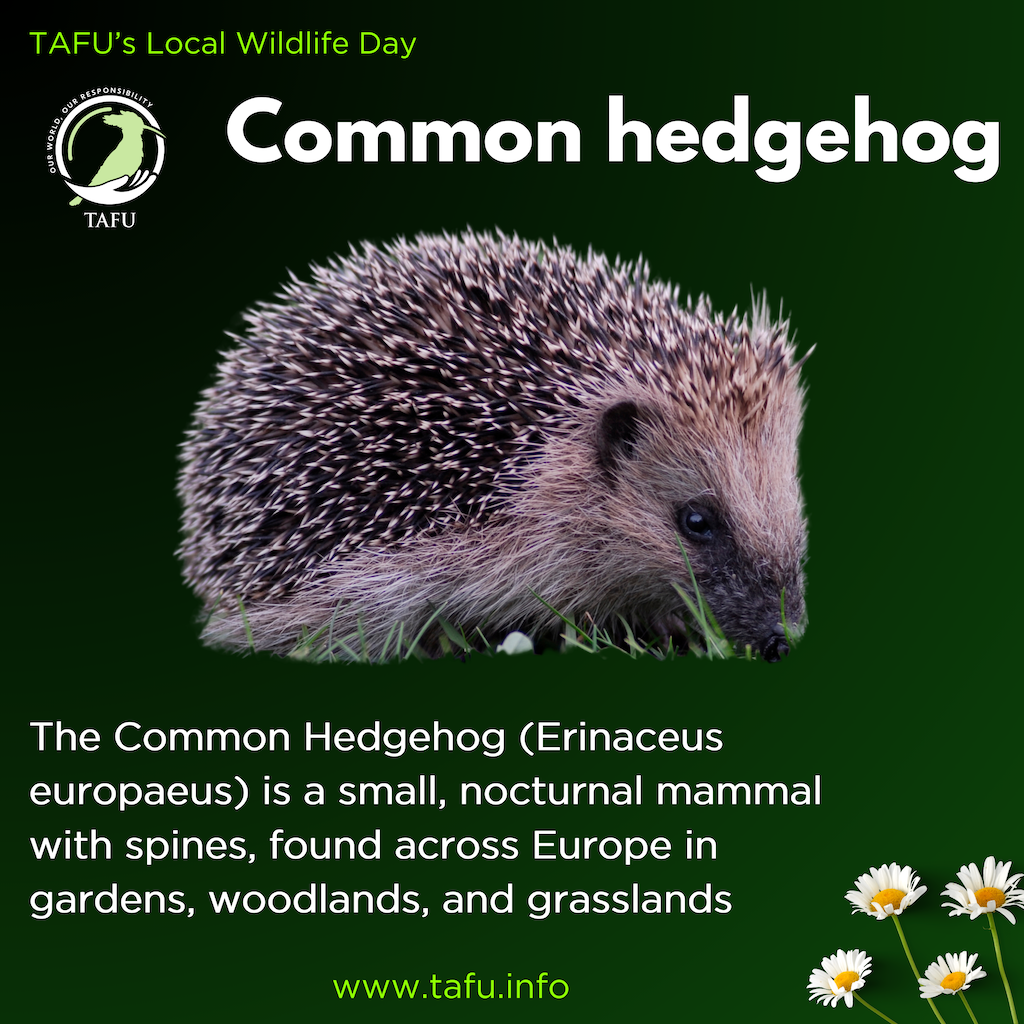The European Hedgehog
As part of the countdown to TAFU’s Local Wildlife Day on the 11th of July https://teensandfriendsunited.org/?page_id=5166 – Species no. 4.
Stay tuned – 39 more days and 39 more species until then!
The European Hedgehog (Erinaceus europaeus) is a small, nocturnal mammal easily recognised by its 5,000 to 7,000 brown spines. It measures up to 30 cm in length and can weigh between 400 to 1100 grams, with males generally being larger than females. These hedgehogs are widespread across Europe, inhabiting woodlands, grasslands, and urban gardens.
European hedgehogs are primarily eat insects, feeding on a variety of invertebrates such as earthworms, beetles, slugs, and caterpillars, but they also consume small vertebrates and bird eggs. They are known for their unique defence mechanism of rolling into a spiny ball to protect themselves from predators like foxes and badgers.
They breed from April to September, with females giving birth to litters of four to six. The young are born blind and covered in soft spines. Hedgehogs hibernate from November to March, building nests of leaves and grass to survive the winter.
Conservation efforts are crucial as their populations have been declining due to habitat loss, road fatalities, and pesticide use. Gardens can be made more hedgehog-friendly by providing nesting sites, food, and ensuring connectivity between habitats.

